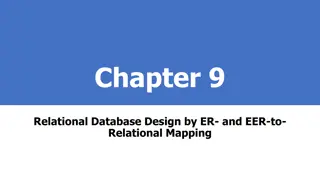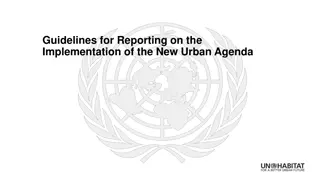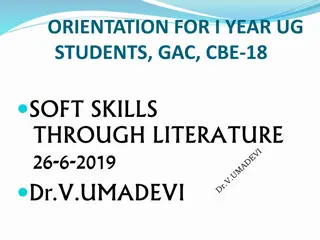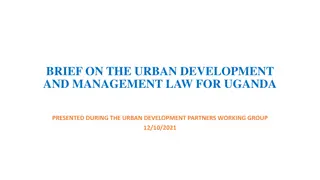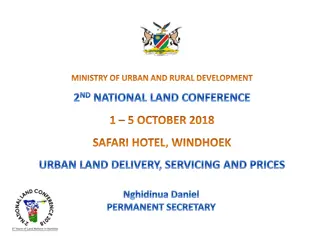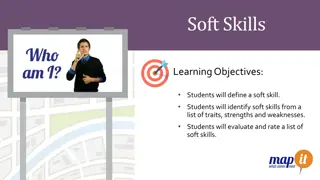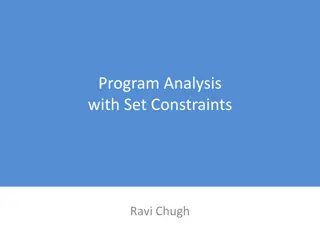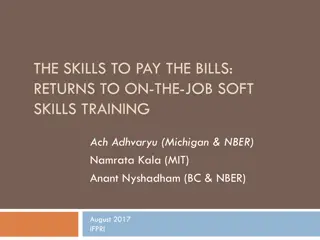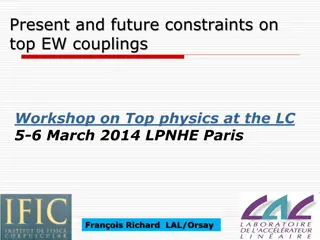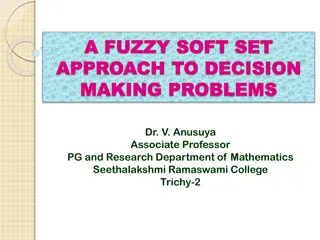Understanding GraphSLAM: Mapping Urban Structures with Soft Constraints
GraphSLAM is an algorithm that extracts soft constraints from data in the form of a sparse graph to create a globally consistent map and robot path. The key idea involves resolving these constraints for accurate mapping. The exposition details assumptions, measurements, and robot poses in the GraphSLAM framework.
Download Presentation

Please find below an Image/Link to download the presentation.
The content on the website is provided AS IS for your information and personal use only. It may not be sold, licensed, or shared on other websites without obtaining consent from the author. Download presentation by click this link. If you encounter any issues during the download, it is possible that the publisher has removed the file from their server.
E N D
Presentation Transcript
GraphSLAM Algorithm with Applications to Large Scale Mapping of Urban Structures Sebastian Thrun Michael Montemerlo Stanford AI Lab at Stanford University Created By: Akanksha, October 2015
Key Idea Behind GraphSLAM GraphSLAM extracts from the data a set of soft constraints, represented by a sparse graph. Then it obtains the map and the robot path by resolving these constraints into a globally consistent estimate. Created By: Akanksha, October 2015
Related Work Extensive work in the fields of photogrammetry, computer vision and computer graphics and robotics by various personalities. Extended Kalman Filter (EKF) mathematically introduced by Cheeseman and Smith(1986) and implemented by Moutarlier and Chatila (1989) Globally Consistent Range Scan Alignment Algorithm by Lu and Milios (1997) Incremental Mapping of Large Cyclic Environments by Gumann and Konolige (2000) Atlas by Bosse et al.(2003, 2004) Etc.. Created By: Akanksha, October 2015
GraphSLAM Exposition Assumption Independent Gaussian Noise with 0 mean Robot pose at time ? is ?? and ?1:? denotes the set of poses from beginning till time ? Control Command between ? 1 and ? is ??, the set of command inputs from beginning till time ? is ?1:? Map ? with large set of features is ? = {??} Measurement at time ? is ??, in multiple scans, range measurement is ??? where ? denotes individual measurement in the range scan ?(?1:? ,?|?1:?,?1:?) Created By: Akanksha, October 2015
GraphSLAM Exposition contd.. Measurement ???= ??,??,? + ??? or for a GPS system ???= (??,?) + ??? with ???~?(0,??) Or we can say ?(???|??,?) = ?????.??? 1 2(??? (??,??,?))??? 1(??? (??,??,?)) Created By: Akanksha, October 2015
GraphSLAM Exposition contd.. Robot pose ??= ?(??,?? 1) + ?? with ??~?(0,??) Or ?(??|??,?? 1) = ?????.??? 1 2(?? ?(??,?? 1))??? 1(?? ?(??,?? 1)) Created By: Akanksha, October 2015
GraphSLAM: Basic Idea Created By: Akanksha, October 2015
GraphSLAM: Building Graph Building Information Matrix and Information Vector ? Given : ?1:? , ?1:? and ?1:? Pose-Feature Constraint (??? (??,??,?))??? 1(??? (??,??,?)) Pose-Pose Constraint (?? ?(??,?? 1))??? 1(?? ?(??,?? 1)) ? 0?0+ ?(?? ?(??,?? 1))??? 1(?? ?(??,?? 1)) + ????? ????= ?0 ? ?(??? (??,??,?))??? 1(??? (??,??,?)) Created By: Akanksha, October 2015
GraphSLAM: Inference The Map and Robot Path posterior are obtained from linearized information matrix and the information vector ? : = 1 and ? = ? Suppose we have ?(?) poses at which ?? is observed : ?? ?(?) ? ?? ?= ? Then we use factorization trick to eliminate measurement constraints by replacing them with pose constraints to reduce our problem to a smaller and ? Map and Robot Path Posterior is updated to = 1and ? = ? in linear time. Finally New Information Matrix ? and Information Vector ??are built for every link between ?? and ?(?), but ?(?) now contains updated poses set to values in ? Created By: Akanksha, October 2015
GraphSLAM: Inference Contd.. Created By: Akanksha, October 2015
GraphSLAM: Algorithm for Full SLAM problem with Known Correspondence Created By: Akanksha, October 2015
GraphSLAM: Algorithm for Full SLAM problem with Unknown Correspondence Created By: Akanksha, October 2015
GraphSLAM: Algorithm for Correspondence Test Function Created By: Akanksha, October 2015
Results Created By: Akanksha, October 2015
Comparative maps w/o and w GPS data factored in Created By: Akanksha, October 2015
Mapping of Terrain Created By: Akanksha, October 2015
Visualization Using Two Observation Platforms Created By: Akanksha, October 2015
Discussion Assumption of Independent Gaussian Noise Limited Reliance on good initial estimate of map Initialization Step Matrix Inversion in GraphSLAM_solve function Gap between Offline SLAM and Online SLAM Questions? - - - - - Created By: Akanksha, October 2015
Thank you! Created By: Akanksha, October 2015




